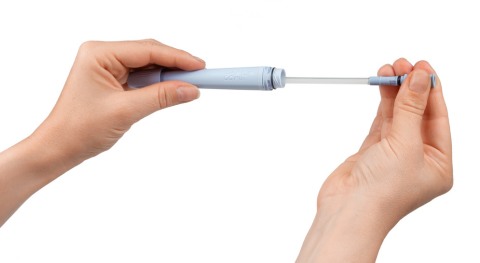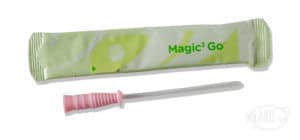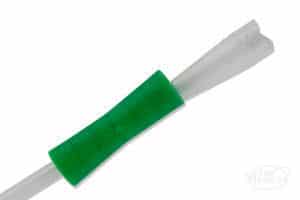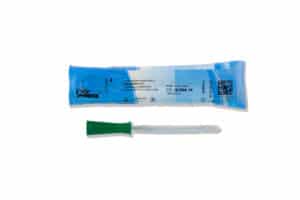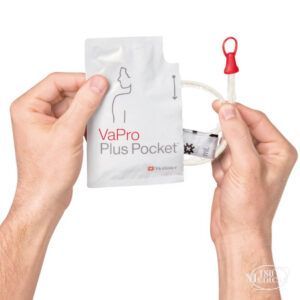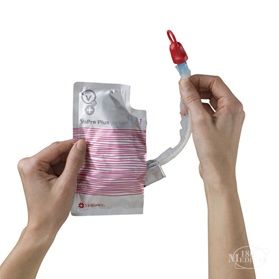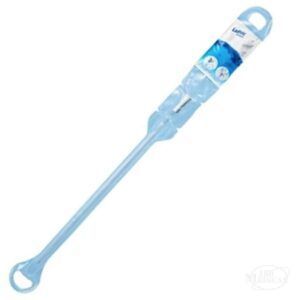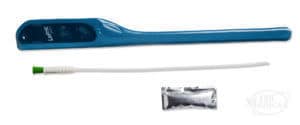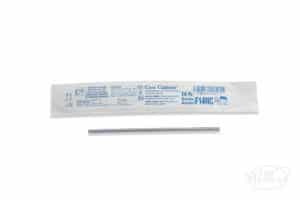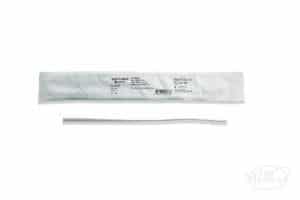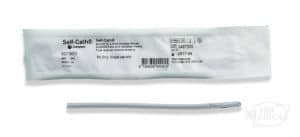
According to a survey conducted in 2019, 93% of respondents said they’re concerned about the environment. With growing awareness about this issue, more and more people are wondering, “Are there environmentally-friendly catheters?” “Can I recycle my catheters?” or “Is there a reusable catheter option?”
It’s natural to want to do our part in reducing waste and taking care of the planet. When you use intermittent catheters daily, you may become more aware of the amount of plastic you throw away. So what are your options? Let’s go over them and get some answers.
Can I Reuse My Catheters to Reduce Waste?
No, it’s not a great idea based on the data, and here’s why. Research shows that reusing catheters poses a risk to your health. Washing and reusing catheters may be linked to an increased risk of urinary tract infections (UTIs).
Also, because of this health risk, the FDA has determined that intermittent catheters are single-use devices (SUDs), which is why you’ll usually see a symbol of a 2 crossed out (meaning no more than one use) on your catheter package.
Many catheter users are no strangers to the occasional UTI, which can cause fever, a burning sensation, fatigue, and blood in the urine. If you’ve experienced a UTI, you know it’s never fun. Plus, many people with UTIs need to make an extra trip to the doctor or even the emergency room if it progresses to a more serious bladder or kidney infection.
At 180 Medical, we always like to make sure you have all the info you need to make a decision about your options. That’s why we’re letting you know about the potential health risks that may be linked with washing and reusing catheters.
While many medical professionals also agree that multiple-time use of catheters is a risky practice, talk to your prescribing doctor to see what they recommend.
Can I Recycle My Catheters?
No, unfortunately. Because urinary catheters are inserted into the body and also come in contact with bodily fluids, catheters are considered biomedical waste.
However, the Convatec GentleCath Air™ for Women comes in a 100% recyclable case!
Are There Other Environmentally-Friendly Catheters?
Yes! Although there aren’t a ton of options just yet, it’s possible we’ll be seeing more environmentally-conscious catheters being made in the future, such as catheters with more sustainable packaging or even biodegradable catheter options.
Here are some more of the first “pioneers” available right now. Contact us if you’re interested in trying out a sample to see what feels and works best for you.
Bard Magic3 GO® Catheters
The Bard Magic3 GO® Hydrophilic Catheter is a popular option for men, women, and children. This catheter features a more environmentally conscious package that’s sleek and discreet. By reducing package size, manufacturers potentially use less plastic when making each product.
Also, you don’t have to get any additional sterile lubricating jelly to use Magic3 GO® hydrophilic catheters. Each catheter is self-hydrating inside the package. That means it’s ready to go as soon as you are, and you’re tossing less waste after cathing.
Its all-silicone layers have no natural rubber latex too, which is a plus for those with latex allergies.
Cura Ultra™ Catheters
Cure Medical Ultra™ Catheters are pre-lubricated and ready to use in discreet pocket-sized catheter packaging. Because its package is smaller, this could be a good eco-conscious catheter option, ensuring minimal material disposal. It’s available in male length with either a straight tip or coudé tip.
Shorter female-length Cure Ultra® catheters are available as well, and they can be a great pocket catheter option. Also, all Cure catheters are made without chemicals and irritants that could be potentially concerning, including BPA, natural rubber latex, DINP, and DEHP.
Hollister VaPro™ Plus Pocket Catheters
Another option from Hollister is the popular VaPro™ Plus Pocket Catheter. The newest design reduces waste by reducing the size of each package. Plus, it’s way more discreet to carry.
The Hollister VaPro Plus Pocket Catheters, available in both male and female length, aren’t just discreet. They also feature a protective sleeve over the length of the ready-to-use catheter, which can help reduce the risk of contamination from hands and other external elements. Its formulation is phthalate-free PVC and made without latex.
LoFric® Hydrophilic Catheters
All LoFric® hydrophilic catheters, including the popular LoFric® Origo™ and LoFric® Primo™ catheters, are made with POBE rather than PVC.
According to one study, POBE (polyolefin-based elastomer) has a better environmental performance compared to existing materials like TPU (thermoplastic polyurethane) and vinyl catheters. Therefore, choosing a catheter made of POBE may be a greener option.
LoFric® hydrophilic catheters feature Urotonic Surface Technology™, which helps maintain a low-friction catheterization during insertion and withdrawal.
Here are just a couple of the many options available from LoFric®.
Not sure if your insurance covers pre-lubricated catheters or hydrophilic catheters like these? Contact 180 Medical to find out. Our insurance experts can verify your insurance plan(s) and help decode any confusion regarding your insurance coverage and benefits. Then you can talk to one of our highly-trained Product Specialists to figure out which available products may work best for you based on your insurance, prescription, and preferences.
Eco-Friendly Straight Catheters
If your insurance plan will only cover uncoated straight catheters, you have options too. Keep in mind you’ll also need separate water-soluble lubricating jelly, such as sterile lubricant packets, to make sure each catheter is smooth for insertion.
One option that can reduce some plastic waste is to get a straight catheter without a funnel (connector) end, which is sometimes known as luer end catheters or whistle tip catheters. Without the funnel, less plastic is used during manufacturing. Plus, there are quite a few different brands from which to choose.
Here are just a few catheters without funnels to consider.
Where Can I Buy Environmentally-Friendly Catheters?
Ready to change your catheter order up with the environment in mind? 180 Medical is ready to help you.
180 Medical is one of the leading providers of catheter supplies with one of the widest varieties of catheter types and brands available. Our Product Specialists will be glad to help you try out some different products to get a feel for what works best for you, based on your insurance coverage and prescription.
Get started today by contacting us.
Disclaimer: Please do not use this information in place of medical advice from your professional healthcare provider.
